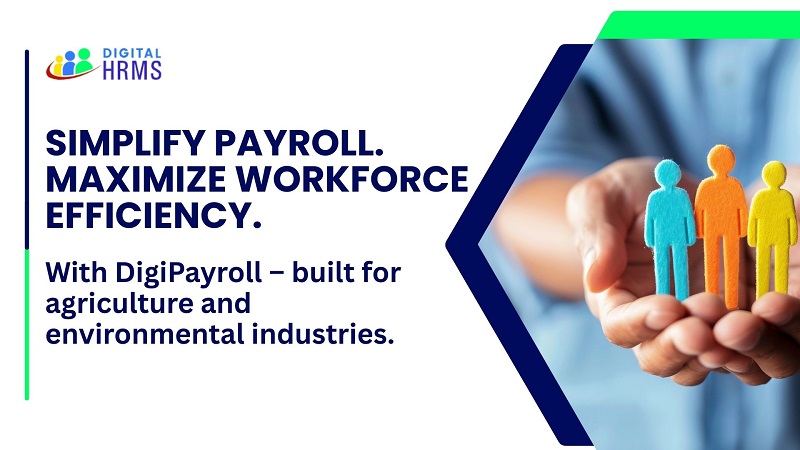Improving Workforce Efficiency: Key Strategies for Optimizing Payroll Management in Agriculture and Environmental Sectors

The agriculture and environmental sectors come with their own set of challenges, especially when it comes to managing payroll. With seasonal changes, a workforce that’s often spread out, and a heavy emphasis on compliance, navigating payroll can feel like solving a complex puzzle. At the core of a productive workforce is the promise of accurate and timely pay. A solid payroll management system isn’t just about crunching numbers—it’s a strategic tool that boosts employee morale, minimizes operational hiccups, and aligns the workforce with the company’s goals.

Understanding Payroll in Agriculture and Environmental Sectors
Managing payroll in agriculture and environmental businesses is far from simple. Workers might be scattered across remote locations, hired on a seasonal basis, or paid based on fluctuating wages tied to factors like yield, hours worked, or environmental conditions. Add to this the strict regulations—from pesticide safety to fair wage laws—and the room for mistakes shrinks significantly.
What sets payroll in these industries apart isn’t just its complexity, but its variability. A sudden rainstorm or drought can shift staffing needs in an instant. Payroll systems need to be flexible enough to adapt to these environmental changes while still ensuring accuracy.
The Strategic Role of Payroll in Human Resource Management
Payroll goes beyond just numbers and paychecks; it’s an emotional connection. It influences how employees view their worth within the organization. In the demanding and often unpredictable world of agriculture and environmental work, any delay or error in payment can lead to dissatisfaction, decreased productivity, or even turnover.
By integrating payroll into the larger framework of human resource management, you create a more cohesive system. Smooth communication between payroll, attendance, hiring, and performance management means that decisions are well-informed and agile. This shifts payroll from a mere administrative task to a vital part of strategic HR.
Common Payroll Challenges in the Sector
Managing payroll in sectors like agriculture can be quite a challenge. Whether it’s keeping track of a pesticide applicator’s hours in a vineyard or figuring out how to pay a reforestation crew based on the number of saplings they plant, the employment landscape here is anything but straightforward. Relying on manual payroll processes, which are still common, can lead to a host of problems—oversights, human errors, and a struggle to handle the complexities that come with scaling operations.
The scattered nature of worksites adds another layer of difficulty to timekeeping. Workers might clock in using paper logs, verbal reports, or outdated systems, making it tough to maintain consistency and accuracy. Plus, staying compliant is like trying to hit a moving target—local, state, and national laws all come into play, each requiring precise documentation.
Key Features of a Modern Payroll Management System
A solid payroll management system designed for agriculture and environmental sectors needs to do more than just basic calculations. Automation is key to cutting down on delays and mistakes. Customization allows organizations to set up pay structures that fit their specific needs—whether that’s hourly wages, pay based on output, or seasonal rates.
Integration is crucial. Payroll systems should seamlessly connect with biometric devices, attendance records, field apps, and HR databases to ensure everything runs smoothly. Compliance tools, tax calculators, and updates on labor laws are essential. The system needs to keep pace with regulations rather than fall behind.
Leveraging Payroll Processing Software for Accuracy and Speed
When set up properly, modern payroll processing software acts like a real-time command center. Deductions for taxes, insurance, or union dues are automated, and salaries are calculated based on pre-defined rules. Payslips are generated accurately and can be accessed right away.
On a strategic level, these platforms can produce payroll reports that provide valuable insights. They can help track overtime costs and spot seasonal labor spikes, allowing managers to plan more effectively and cut down on redundancies. A smart payroll solution turns data into foresight, making it easier to navigate the complexities of payroll management.
Why Payroll and Time Tracking Software is Essential in The Agricultural and Environmental Industries
The ever-changing nature of environmental and agricultural workforces makes real-time tracking absolutely crucial. Payroll and time tracking software fills this need perfectly. By connecting with GPS, RFID, or mobile attendance systems, it guarantees that even the most remote teams are accurately accounted for.
![]()
Gone are the days of piecing together scattered records. These tools bring everything together into cohesive dashboards. Payroll administrators can easily keep an eye on field-level attendance, verify hours worked, and initiate payroll cycles without any holdups. This integration helps cut down on fraud, enhances transparency, and speeds up payroll processing.
Research by EY Global Payroll Survey (2022) found that up to 32% of payroll errors stem from manual data entry, which could be easily avoided through automation.
Digital HRMS Payroll Module with Payroll
Digital HRMS, with its integrated Payroll module, provides a tailored solution for organizations looking for scalability and accuracy in their payroll processes. This is especially advantageous for labor-intensive sectors, as the platform offers complete automation—from capturing attendance to generating payslips.
What makes Digital HRMS Payroll stand out is its flexibility. Whether you're overseeing contract workers on a biodiversity project or daily laborers in a greenhouse, the system can adapt to your specific needs. Tax updates happen automatically, compliance across multiple locations is simplified, and every action is traceable.
Additionally, Digital HRMS Payroll integrates seamlessly with biometric devices and field apps, making it perfect for organizations with teams spread out across different locations. The ability to create detailed payroll reports allows management to visualize labor costs, forecast resource needs, and optimize workforce deployment.
Conclusion
When it comes to efficiency in agriculture and environmental sectors, it’s not just about the tools and machinery; it’s also about how well we manage and reward our human workforce. Payroll plays a crucial role in this management and needs to move beyond basic spreadsheets and manual checklists.
With advanced payroll processing software like the Digital HRMS Payroll tool, organizations can easily handle complexities, enhance accuracy, and boost employee satisfaction. By doing this, they not only streamline their operations but also cultivate a more agile, motivated, and productive workforce.
Streamline your payroll operations and boost workforce productivity. Discover how DigiPayroll from Digital HRMS can transform payroll management in agriculture and environmental sectors—automate, comply, and optimize today!